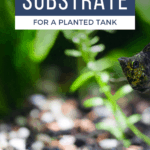Next to saltwater reef tanks, the most beautiful type of aquariums are those filled with live plants. Planted freshwater tanks pose a challenge, however, because the ideal substrate for your fish may not support your rooting plant’s growth. If you want to exercise your aquatic green thumb you’ll need the best substrate for planted tanks!
Quick Comparisons of the 6 Best Substrate for Planted Tanks
| IMAGE | BRAND | DETAILS | |
|---|---|---|---|
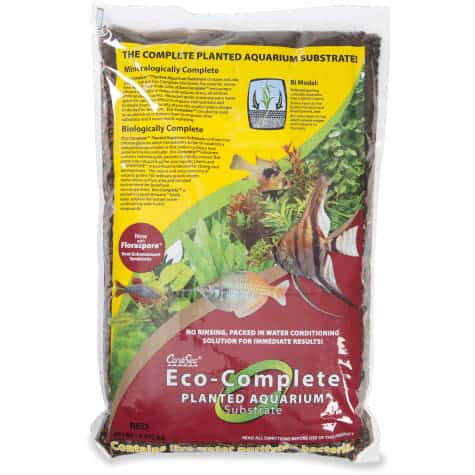 | CaribSea Eco Complete Coarse Red |
| View Product |
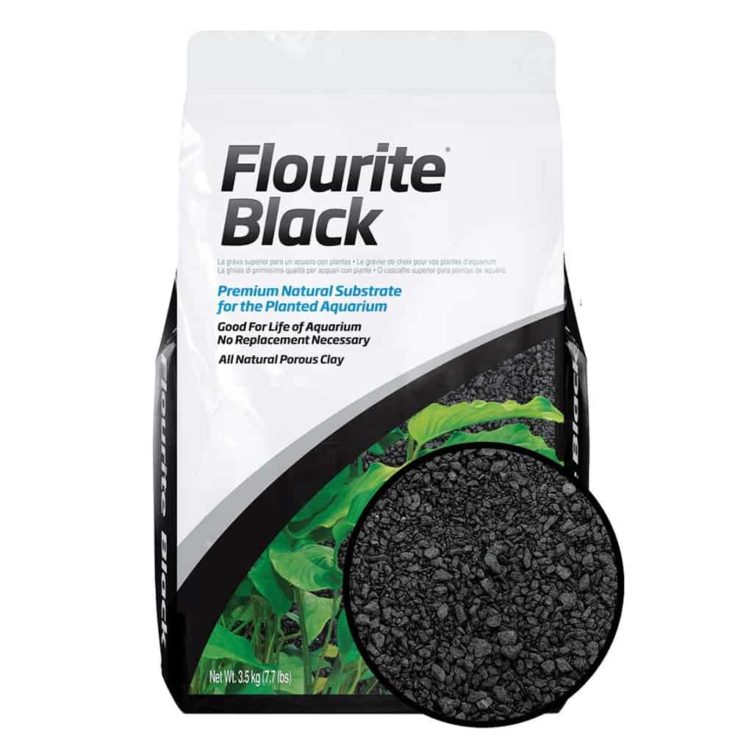 | Seachem Flourite Black Clay Gravel |
| View Product |
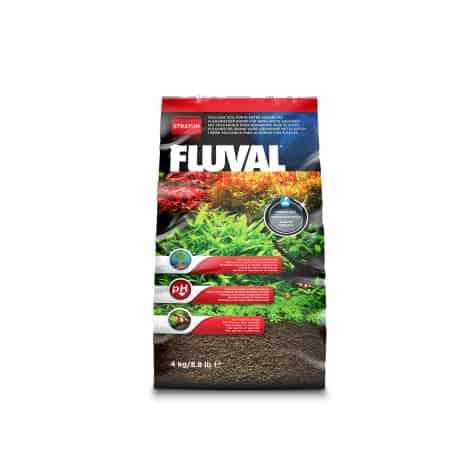 | Fluval Plant and Shrimp Stratum |
| View Product |
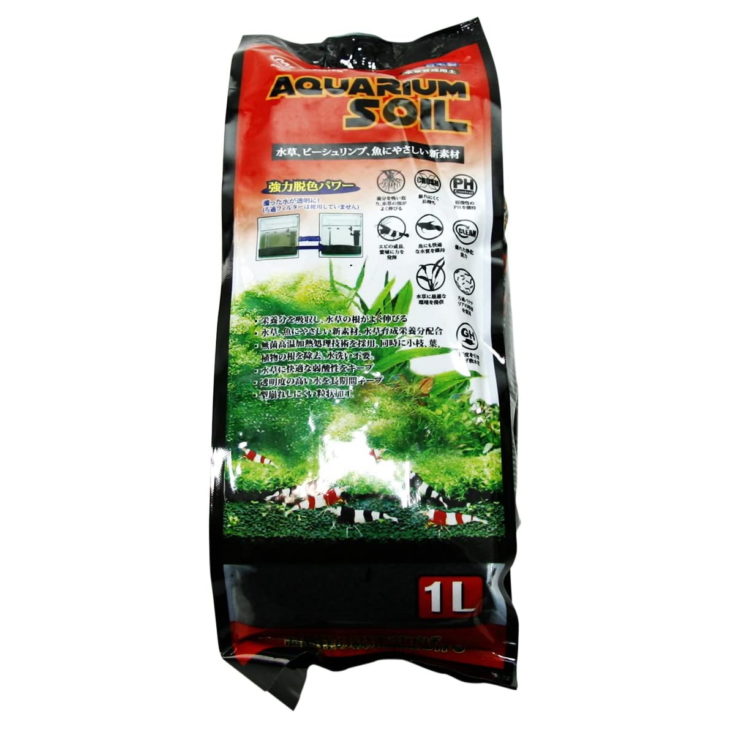 | Mr Aqua Plant Soil |
| View Product |
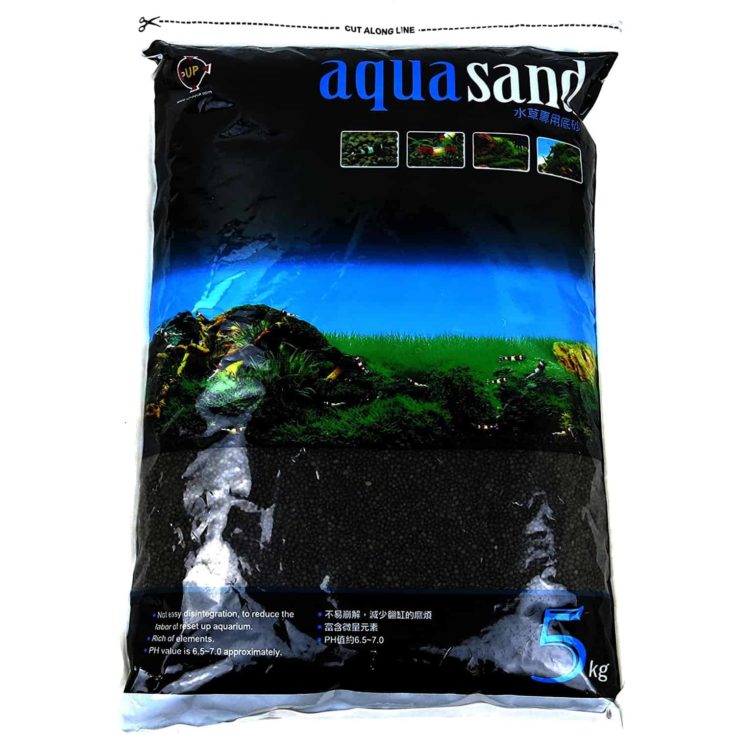 | Up Aqua Sand for Aquatic Plants |
| View Product |
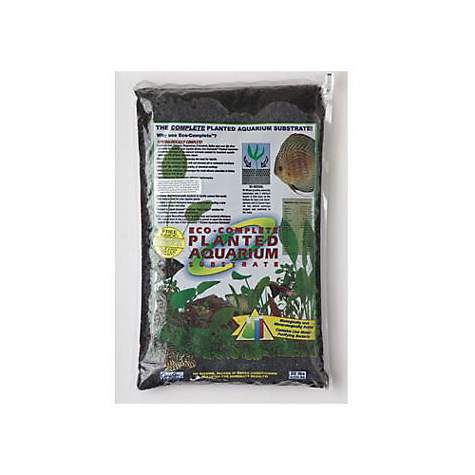 | CaribSea Eco Complete Black |
| View Product |
Introduction to Substrates for Planted Aquariums
There are two types of plants typically found in freshwater aquariums: those that root in your substrate and those that grow on your aquarium decor. While all aquatic plants need the right amount of light and nutrients to thrive, your rooting plants need the extra support a good plant substrate can provide.
Benefits of Using Plant-Enhancing Substrates
There are many benefits to using special substrates in your planted tanks rather than using regular aquarium gravel or sand. Regular aquarium substrates don’t provide any extra nutrients or trace minerals your plants can use, and the texture and composition of these substrates can actually impede your plant’s growth.
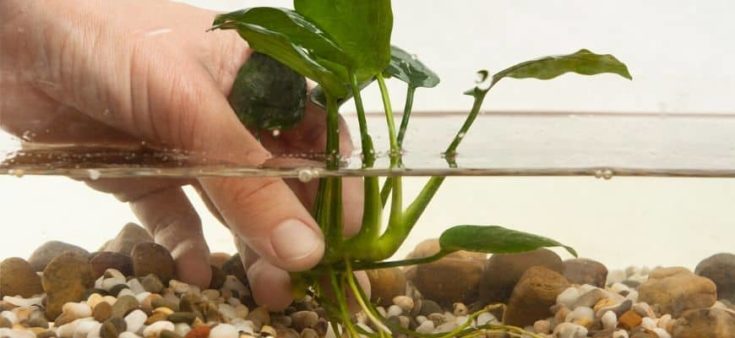
The size and shape of a plant substrate are carefully calculated to help:
- Protect delicate plant roots
- Support healthy colonies of “good” aquatic bacteria
- Prevent compaction and oxygen-depleted “dead zones” from developing
High-quality plant substrates also:
- Contain trace minerals like iron and other nutrients to support healthy aquatic plants
- Slowly release the nutrients over time, preventing ammonia and algae spikes
- Last for many years and don’t need frequent replacement
| Advantages | Disadvantages |
|---|---|
|
|
Types of Plant Substrates for Aquariums
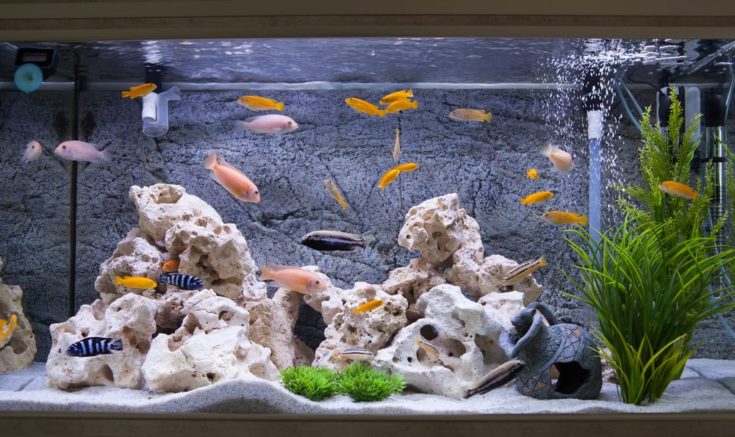
It’s not always easy to immediately identify a good substrate for your tank, because it depends on the types of plants or fish you want to keep. The best substrate for a planted discus tank would be different than one for African cichlids, for instance.
There are many types of substrates on the market, but the best aquarium substrates for planted tanks can be broken down into the following categories:
Sand and Fortified Sand Substrates
Aquarium sand is usually collected from streams and rivers or manufactured from silica and processed into a uniform size and shape. Any substrate with a particle size from 1/16 to 2 mm in diameter is considered “sand” no matter what it is made from.

Most types of sand are not ideal for growing rooting aquatic plants. While plain black sand in planted tanks may look spectacular and show off your fish, they don’t contain nutrients or trace minerals to support your plant’s growth. Also, sand compacts down easily and inhibits good bacterial growth.
Sandy tanks nearly always have problems with dead zones and produce spindly and weak plants. Fortified aquarium sands for plants and shrimp are the exception to the rule. These products have a small particle size but are not truly sand. Especially when layered with another substrate, they can produce fantastic results!
Gravel and Fortified Gravel Substrates
A substrate is considered an aquarium gravel if the particle size is 2 mm or larger in diameter. Aquarium gravels can be harvested from the wild or manufactured artificially from resins, clay, or even soil. You’ll have to read the fine print to determine what each product is made from, as it isn’t always easy to tell.
The best fortified gravel substrates for planted tanks are usually manufactured from natural ingredients and slowly release nutrients and trace minerals into your aquarium water. They may contain volcanic ash, rich iron-infused clay or other natural ingredients that boost the fertility of the plants in your tank.
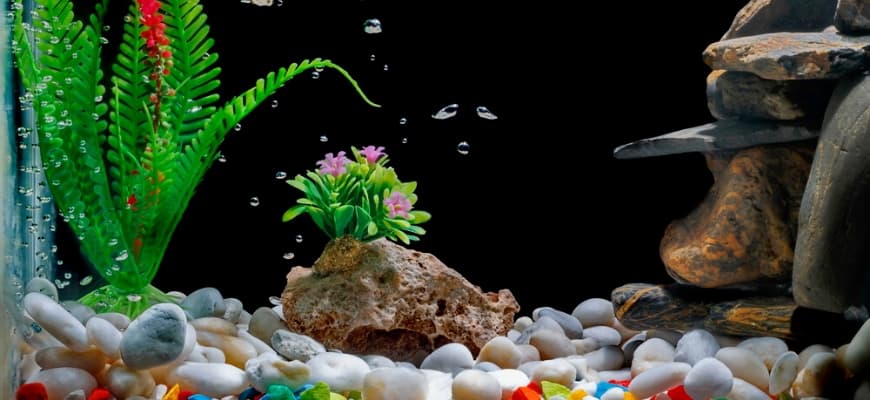
Regular aquarium gravel and products made from polished pebbles, glass or resins are not suitable for growing rooting plants. Your plants may do OK for a while, especially if you add fertilizers to your water, but they won’t thrive.
Potting Soils and Aquarium Soil
You might be tempted to make a potting soil aquarium, but I’d advise against that if you also plan to keep aquatic animals and fish in your tank. While potting soils can provide a decent environment for rooting plants, they quickly fade as the soil’s nutrients are depleted. You’ll have to replace the soil frequently, too.
They’re also nearly impossible to vacuum clean and usually don’t work with aquarium filtration systems. You can occasionally make it work by using a pocket of potting soil underneath a layer of sand or gravel, but this isn’t ideal for your plants. If you want to use something like potting soil, why not consider aquarium soil instead?
Technically, these soils are considered aquatic sands because of their fine particle size and some are labeled as both sand and soil. An Ada soil aquarium would be one option, or you could search for Controsoil for sale online. Look for products that specifically mention they support plant and bacterial growth and are safe for fish.
Laterite and Vermiculite
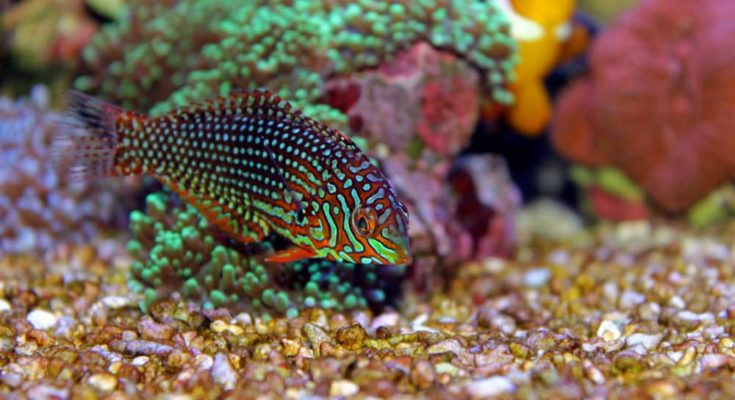
Laterite is a type of porous clay that is rich in iron, and vermiculite is a mineral-rich compact substrate that contains aluminum, magnesium and iron.
Laterite and vermiculite are both common additives to aquarium substrates for plants but are usually not used on their own. Back in the day, the only option was to make our own plant formulations so we’d have to layer or mix these into our base substrates if we wanted a lush planted aquarium.
These days we have complete aquarium substrates available so we’re not limited to mixing custom formulas. But you can still mix laterite and vermiculite into your base substrates to boost their power, or use vermiculite as the bottom layer of substrate and cover (cap) it with another product to enrich your rooting plants.
Aquarium Substrates to Avoid for Freshwater Planted Tanks
While it may be tempting to opt for another type of natural aquarium substrate like marble or coral, these are bad choices for planted tanks. While you can use crushed coral substrate in freshwater aquariums to help increase your water’s pH, it can be toxic to aquatic plants.
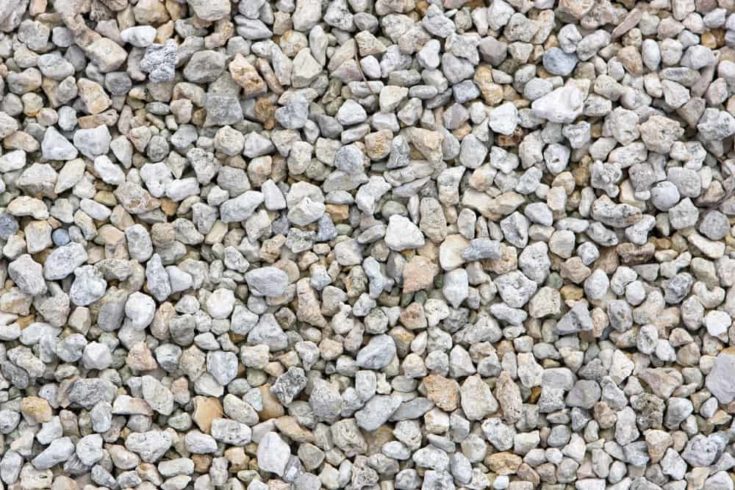
Crushed coral and marble chips increase the hardness of your aquarium water. Most aquatic plants prefer neutral or slightly soft water and don’t thrive in very hard water. I’d avoid these types of substrate for planted tanks and opt for a mix that better supports your plant’s growth instead.
Tips to Choosing a Plant Substrate for Your Tank
When selecting a substrate or mix of substrates for your tank, consider the following factors as you research your options:
Complete vs Compound Aquarium Substrates
A complete substrate is one you can just add to your tank and start planting in right away.
- You don’t have to mix or layer it in your tank (although you still might choose to)
- A complete substrate supports the plant’s roots and provides the minerals they need to grow. All of the substrates reviewed below are complete products.
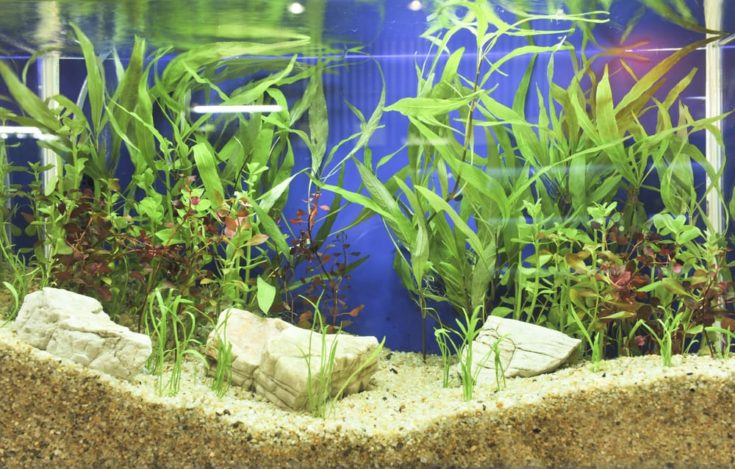
A compound aquarium substrate is one that requires the addition of another type to make it viable for growing plants. Regular aquarium gravel, vermiculite and laterite are all examples of compound substrates. If you opt for this mix you’ll have to pay close attention to how you layer or cap your substrates to prevent cloudy water.
Appearance in the Tank
Obviously, you want to pick a product that gives your tank the look you’re aiming for. But you may be drawn to the appearance of a substrate that isn’t ideal for rooting aquatic plants, like a smooth sand or soil. What should you do in those cases?
- You can always opt for a fortified version of the substrate you prefer if there’s one available.
- Consider hiding pockets of high-quality substrate in sections along the rear of your tank and using your preferred substrate in the front. Then your plants can grow in the best stuff but you’ll only see the pretty parts!
- You can also use a high-quality plant substrate for the lower layers in your aquarium substrate and then top or cap it with a better-looking product. But this might not support a dense growth of low-growing plants or ground cover.
Particle Size
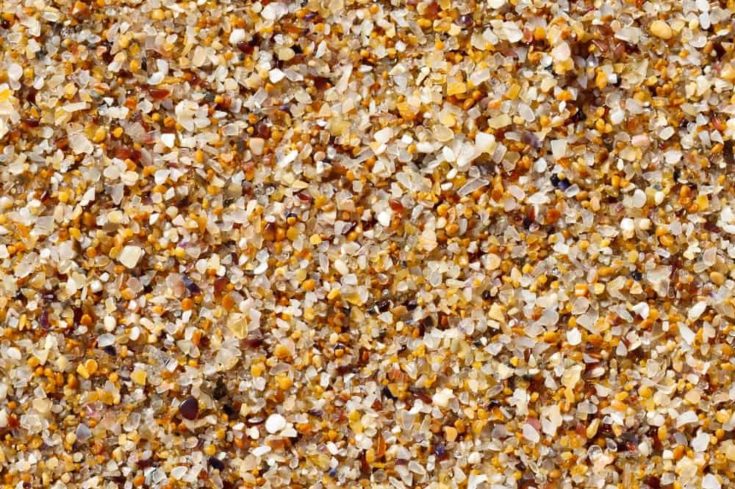
The particle size matters to your plants and aquatic animals and affects the function of your filtration systems. Some delicate fish like loaches prefer fine sand and gravels that won’t damage their barbells and some shrimp rely on fine sediment for feeding. If you choose an option with a very small size you may need to adjust the filter intakes.
Price and Amount Needed
Substrates for planted tanks can be much more expensive per pound than standard aquarium gravels and sand. While you’ll usually use about a pound of substrate per gallon of water to fill a fish tank, for planted tanks you’ll often use a lot more.
You want at least 2 to 3 inches of good substrate for your rooting plants, and you can use even more if you want to create the impression of hills or valleys in your tank. You’ll need to use about double the amount of fine products like fortified sands and soils since they compact down so much, too.
Longevity of Your Substrate
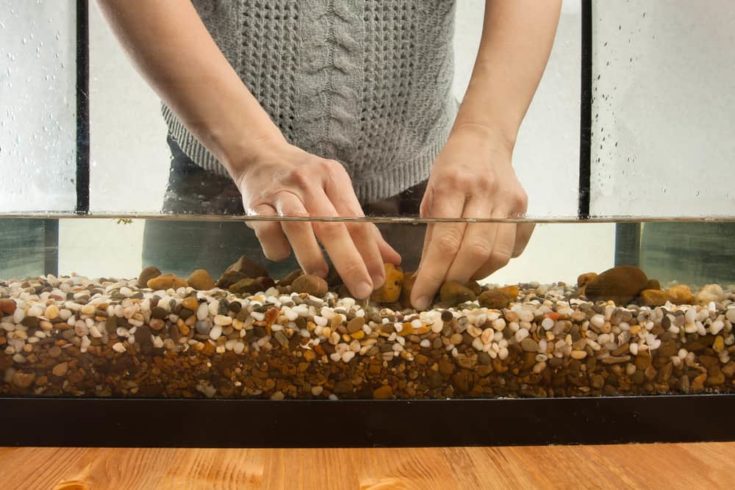
Should you worry about changing aquarium substrates, and how often would you need to do that? If you pick a high quality complete planted substrate, like those in the reviews below, you should not need to swap out your substrates unless you’re completely redoing your aquarium.
You may need to add substrate occasionally to replace any that’s been lost to filters or gravel vacs. All substrates compact down a bit, and some types also may break down and decompose in your tank. Sand and soil substrates are the worst offenders of compaction and organic substrate pellets often decompose.
Maintenance Issues
Sand and aquarium soils are harder to maintain because gravel vacuums and filters can pick up the sediment along with the waste products. If you cover the filter intakes and gravel vacs to prevent this they will leave more waste behind, which could hurt your fish and plants.
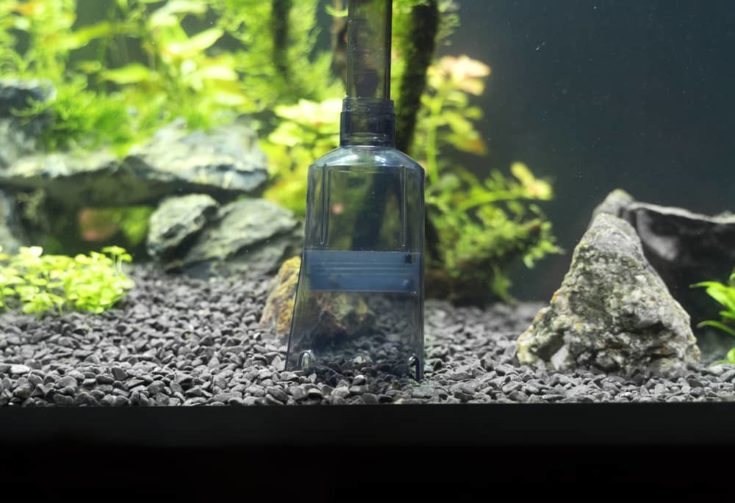
Gravel substrates are easier to maintain and allow more water flow to prevent dead zones. They tend to be better at supporting colonies of good aquatic bacteria too. These substrates also hide the debris and waste better since they blend into the gravel. Sand and soil-based tanks can often look messy by comparison.
Top 6 Substrate for Planted Tank Reviews
These six substrates represent some of the best options on the market for planted freshwater tanks that also support community fish and invertebrates. They are all high-quality products that should help your aquatic plants thrive for years to come.
You’ll still need to use plant fertilizers and other additives like CO2, however, especially if you’ve opted for a densely planted tank or one with plants that attach to your decor. It’s nearly always better to allow a planted tank to cycle for a few weeks before adding animals to your aquarium, in case of ammonia spikes.
1. CaribSea Eco Complete Coarse Red

- Weight: 20 pounds
- Type: Complete Fortified Gravel
- Color: Red
- Particle size: Coarse 3 to 6mm
CaribSea Eco Complete Red is my current favorite when it comes to planted aquariums, and of all the options this could be one of the easiest to use too (along with the other Eco Complete formula below). The coarse red gravel is perfectly sized for all types of filtration systems and it’s easy to vacuum clean.
Your plants will get a jump-start when you add this substrate to your tank, because you won’t have to wait weeks for colonies of good aquatic bacteria to grow. Instead, the bag is filled with a patented “Amazon” black water along with the substrate. The best part is you don’t need to rinse it—just put it straight in your tank and plant away!
| PROS | CONS |
|---|---|
|
|
2. Seachem Flourite Black Clay Gravel

- Weight: 15.4 pounds
- Type: Complete Fortified Gravel
- Color: Black
- Particle Size: Approximately 2 to 3mm
For many years Flourite was my go-to product for planted freshwater tanks. I’ve used it completely on its own in densely planted tanks and used it under the sand when I wanted a smooth lake bottom look to my aquariums. It’s a stable clay-based gravel that’s high in iron and the ideal size for filtration systems and rooting plants.
Flourite is a high-quality substrate that lasts for years and doesn’t really compact down, so you don’t need to worry about dead zones or adding extra gravel to your tank. But it has one big downside that caused me to shift to the Eco Complete line—it’s very dirty. It takes forever to rinse clean and it will still cloud your water.
| PROS | CONS |
|---|---|
|
|
3. Fluval Plant and Shrimp Stratum

- Weight: 8.8 pounds
- Type: Complete Fortified Fine Gravel
- Color: Dark Brown
- Particle Size: Approximately 2mm
If you have a small aquarium with plants and invertebrates, then you should consider this special plant and shrimp formula from Fluval. It’s the ideal size and shape for raising baby and adult shrimp, and it works with most types of filtration systems too. You can use it on its own or mix it with another substrate if you prefer.
The particles are made from Japanese volcanic soil and molded into a round shape. They provide minerals and iron to your plants and are porous to support aquatic bacterial growth. Rooting plants of all types will thrive in this substrate and it’s safe for most tropical fish as well.
| PROS | CONS |
|---|---|
|
|
4. Mr Aqua Plant Soil

- Weight: Approximately 1.8 pounds
- Type: Complete Fortified Gravel
- Color: Black
- Particle Size: Approximately 2mm
Another option for a shrimp tank or slightly-acidic community tank is this long-lasting plant substrate from Mr Aqua. These gravel-sized particles are made from organic and inert materials that slowly release minerals to support healthy plants and bacteria.
You won’t need to use additional fertilizers for up to 16 months when you use this soil! But there are some downsides to the product. It’s really ideal for very small tanks and doesn’t come in larger sizes for bigger aquariums. Also, this type of substrate will compact and decompose and may need replacing every few years.
| PROS | CONS |
|---|---|
|
|
5. Up Aqua Sand for Aquatic Plants

- Weight: 11.5 pounds
- Type: Complete Fortified Sand
- Color: Black
- Particle Size: Just under 2mm
If you’ve been considering using Ada soil but don’t care to deal with the downsides, then this aquarium “sand” for aquatic plants by Up Aqua could be a great choice for your tank. It isn’t truly a sand but rather small clay-based pellets the size of large sand particles.
They slowly release minerals into your water and help your plants to grow and thrive. The porous pellets also support healthy bacteria growth and allow water to flow through your substrate. This is an excellent option for growing ground covers with very fine roots and is soft enough for loaches too.
| PROS | CONS |
|---|---|
|
|
6. CaribSea Eco Complete Black

- Weight: 20 pounds
- Type: Complete Fortified Sand and Gravel Mix
- Color: Black
- Particle Size: Mix 0.25 to 7mm
This substrate closely resembles the red-colored Eco Complete but is black and has a wider mix of particle sizes. But like the other version, this product is ideal for planted tanks and all types of tropical freshwater fish. It supports lush plant growth and comes filled with “Amazon” black water for healthy bacteria proliferation.
The rich, dense black color will really highlight your plants and fish and the mix of gravel and sand sizes allows plants with delicate roots to thrive. You can easily grow ground covers with this substrate. Like the other CaribSea substrate, you won’t have to rinse this product and can start planting immediately!
| PROS | CONS |
|---|---|
|
|
Conclusion
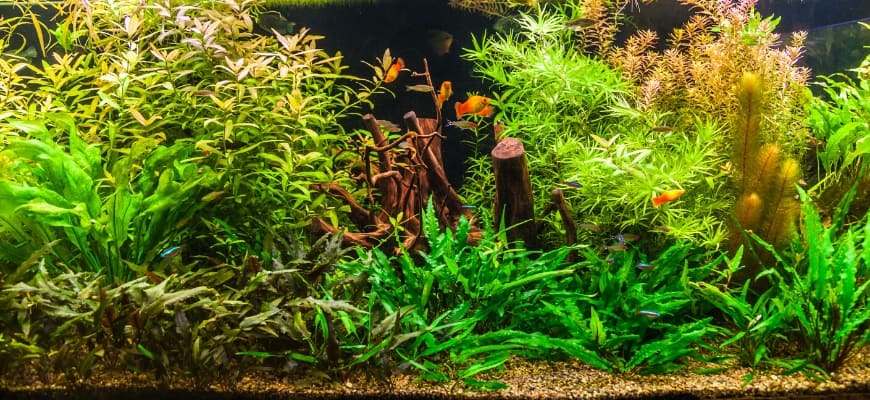
The best substrate for your planted tank depends on your budget and the types of fish and plants you want to grow. For growing more delicate ground covers and bottom-dwelling shrimp and loaches, finer sand-like substrates are best. But gravel substrates are easier to maintain and work with most filtration systems.
If you are still trying to decide which product is right for your tank:
- The best overall choice would be the CaribSea Eco Complete Red, with the Flourite and Black Eco Complete being close runner’s up.
- For planted shrimp tanks, the Fluval Stratum is ideal but the Mr Aqua is also a good option
- If you prefer a sandy substrate, consider the Up Aqua Aquatic Sand, or use a good plant substrate for the lower layers and cap it with the sand of your choice.
